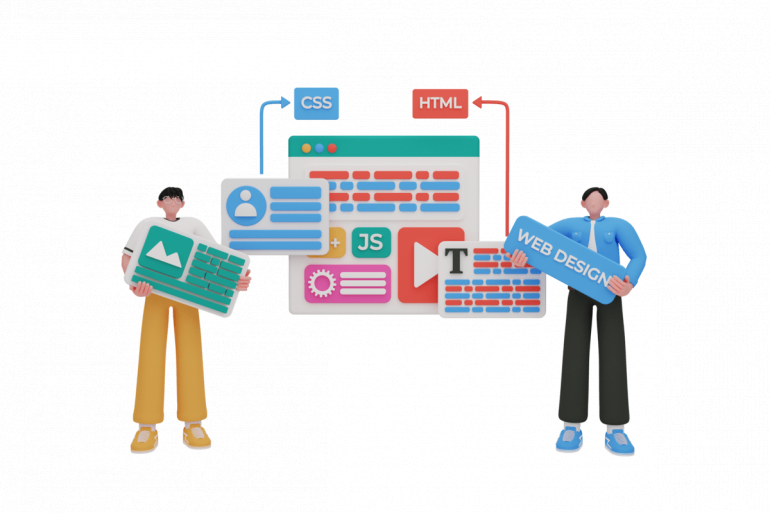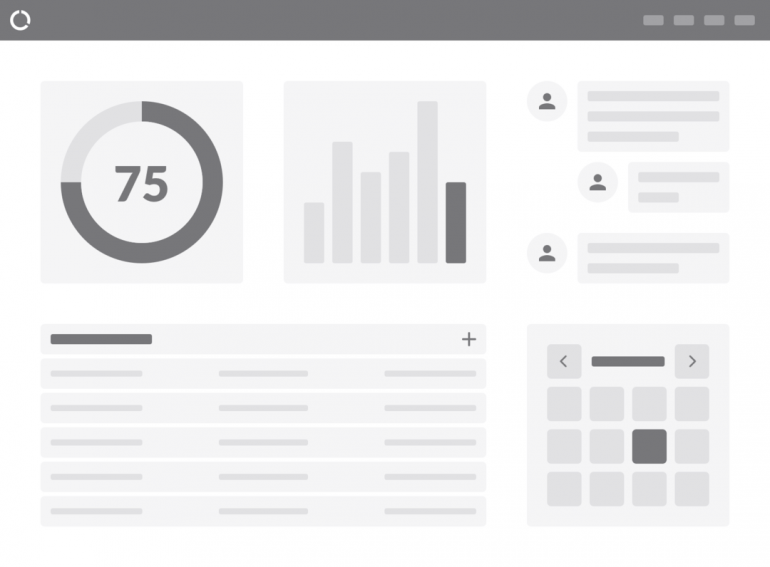Modular Web Design: Creating Flexible Online Experiences

If you’ve been on the digital scene for a while, you’ve probably heard the term “modular web design,” which describes the technique of developing websites that enable you to expand and modify the content and layout without any specific problems. Simply put, the modular grid web design enables both developers and designers to use “blocks” or “modules” in the layout, which can be rearranged and moved around in several combinations.
Needless to say, there are several advantages to modular web design. First of all, it’s simple and allows for flexibility and easy maintenance and updates. Apart from that, the site structure and the content can be tailored to meet the requirements of several different situations and users.
In this article, we’ll strive to give our readers a better understanding of modular web design, the advantages of the technique, and the basic idea behind modular web design and creating reusable components.
Traditional vs. Modular Web Design
What is modular web design actually, and why should you consider it over tried and tested traditional approaches? For starters, developers and designers agree that traditional websites are becoming obsolete, and for valid reasons.
For starters, great modular web design examples are excellent at improving user experience and engaging users, which improves the total time spent on a given platform and has a great chance of increasing conversions.
On the other hand, experts more or less agree that traditional web development processes have become somewhat bloated, often taking more than six months to complete, with even the slightest tweaks or bugs throwing the entire launch process off of schedule. On top of that, the average website lifespan is less than three years, and the costs of traditional development often simply don’t justify either the time or the resources needed to create a site that will need to be overhauled in less than three years.
And this is where the advantages of modular web design can come into play.
What is Modular Web Design?
Modular web design services, as hinted above, are a technique for creating flexible and easily scalable components and patterns that designers and developers can reuse. With this approach, producing new pages becomes quicker, and the reusable components and features can be utilized in various ways.
In modular web design examples, you have total control over how the models are organized while creating new pages. You have the ability to alter already existing modules to redesign the site or to update the content. This type of flexibility can be extremely useful in the case of larger digital platforms, as several pages can be updated faster without considerable page/site downtime.
Modular Web Design Features
What are the main features of the approach? What is a module in modular web design? Below are the main characteristics and features of the design process.
The components, or modules, are forged into aesthetically cohesive chunks, and the brick-like modules enable designers to create more adaptive and flexible patterns. In modular web design, every template will have these content blocks.
When compared to conventional design processes, modular design focuses on creating more reusable elements and blocks.
The components can be deployed in various ways on various pages, and the blocks may also be used to identify patterns and basic design principles for upcoming design tasks.

Modular Web Design Examples
Modern web design is based on consistency and dependability. In this regard, modular web design can address both.
For example, the main pages of a topic cluster, often even home pages, are referred to as pillar pages. The main role of the pillar page is to give a more thorough introduction to a particular topic/problem and then offer links to other content pages where the same topic is examined even more depth. The interlinked pages build site networks.
A website like this will use modular design principles because every element of the pillar page is blended with the other pages within the topic cluster, as they connect various pieces of content together.
The Benefits of Modular Web Design
By now, some of the basic advantages of this approach should be obvious. Apart from those, the modular approach has several, often less obvious, advantages, such as the following:
Improved Growth Potential
The digital landscape is changing rapidly, and these swift changes usually involve every aspect, from changing content trends to evolving design trends. The modular approach enables site owners, developers, and designers to easily add new content, experiment with the latest ways of displaying content, or even use entirely new technologies to enhance their sites.
To that end, one of the greatest benefits of modular design is the fact that it’s flexible enough to keep up with technological advancements. New functionality and new features are all easily implementable and can be completed without a full-scale redesign.
The Opportunity of Adding New Pages With Ease
The modular architecture enables you to create the site faster and will let you add new content pages as time passes. When you introduce a new module, it will be more or less compatible out of the box, and you won’t need to mess with design, development, QA, and so on.
Ease of Use
Another massive advantage of the modular architecture is the fact that you can tweak or update the content without the need for a developer. This means that your marketing teams can easily create new pages with the module library and will never have to mess with even a single line of code. The modular design principle enables you to implement slight design tweaks like headline style changes without any fuss, and other, similar small changes can be just as quickly applied to other elements as well.
Needless to say, similar small tweaks would take a lot more time and effort if you’re team were to use traditional design principles, which are a lot more rigid.
Costs Less
In modular design, the basic idea is creating reusable components. Once these are ready, you will never have to perform a complete redesign ever again. Instead, you will have the option of making gradual improvements and changes to your site as some features or elements become obsolete. This will cut down significantly on the time required for back-end development and will enable site owners to save money without sacrificing user experience or overall quality. Then, the leftover resources can be poured into other online or offline efforts that aim to help your business evolve.
Easy Maintenance
Launching, testing, and promptly fine-tuning is a seamless process with this approach. This stands as just one of the pivotal advantages of this design philosophy. Rather than crafting content based on what you believe might engage your audience, you can adapt your content strategy based on real-time data and the preferences of your target audience.
Overall, the modular design philosophy enables you to minimize the guesswork and create a design and content strategy that you can change on the go based on actual data.
Challenges in Modular Web Design
Even though modular web design has managed to make the design process a lot faster, it doesn’t mean that the approach is perfect. Here are the possible challenges that may often cause developers and designers headaches.
Careful Planning
In several instances, the modular approach presents several challenges for developers and designers. For example, it can be complicated to predict how different page elements will behave on different screens and devices. Even with experience and careful planning, errors can occur if a component fails to fit into a specific screen dimension.
Content Reuse
While striving to create a consistent user experience across all pages is what every designer and site owner strives for, modular web design can make the process difficult, especially in the case of content reuse. If not handled with care, things can get really confusing and even chaotic.
More specifically, tracking originally developed content can be a challenge, along with tracking updates and overhauls. Still, this issue can be easily resolved with the deployment of a content management system.
Too Many Modules – Site Inconsistencies
Websites adopting modular design often feature pages made up of multiple smaller components. This grants significant flexibility, allowing for the creation of distinct and custom layouts.
However, this approach also comes with its share of potential challenges. As the number of pages with unique layouts increases, the design might lose cohesion and become disorganized, resulting in difficulties in navigation and maintaining a consistent look. Poor planning can also hinder swift adjustments or the addition of new elements to existing website designs.
Modular Web Design – More Creativity at Your Fingertips
Simply put, the modular approach enables you to be more flexible and more creative and simply enables you to embrace new possibilities with your website without having to overhaul your current web project.
Still, this architecture commands careful organization and attention to detail to avoid inconsistencies and impaired website responsiveness.
On the other hand, the approach enables businesses to create a flexible online platform where they can constantly tweak their pages, continuously striving to perfect their online brand presentation and user experience.
Copyright © . All Rights Reserved